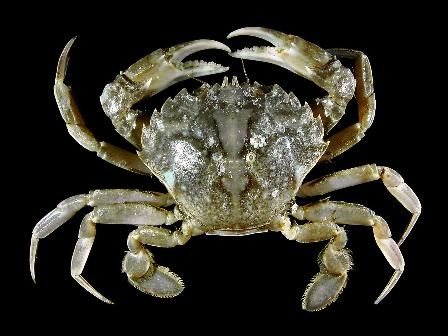How to Make a "Bananatrode"
Psalm 147:5
“Great is our Lord, and of great power: his understanding is infinite.”
Just imagine a scientist going to the supermarket where he picks up a banana, an antenna from a blue crab, and a whisker from a catfish. He takes these back to his lab, hooks them together and connects the whole thing to his computer. He calls it a “bananatrode” and uses it to detect chemicals from the human body called dopamine.
 While scientists don’t actually do that, the scene is not so far-fetched. The crab antenna can detect tiny traces of amino acids in salt water. You see, crabs find their lunch by sensing and tracing down amino acids in the water. The catfish whisker can detect equally small amounts of amino acids in fresh water, and they both can do so extremely quickly. Scientists know that these natural sensors work much faster and are more sensitive than man’s rather cumbersome methods of laboratory analysis. For that reason, they are being seriously studied for human medical use. One such application is a glucose sensor for an artificial pancreas. Oh, and the banana? That was for the scientist’s lunch.
While scientists don’t actually do that, the scene is not so far-fetched. The crab antenna can detect tiny traces of amino acids in salt water. You see, crabs find their lunch by sensing and tracing down amino acids in the water. The catfish whisker can detect equally small amounts of amino acids in fresh water, and they both can do so extremely quickly. Scientists know that these natural sensors work much faster and are more sensitive than man’s rather cumbersome methods of laboratory analysis. For that reason, they are being seriously studied for human medical use. One such application is a glucose sensor for an artificial pancreas. Oh, and the banana? That was for the scientist’s lunch.
It is amazing to consider that while the crab and the catfish are pretty low on the evolutionary ladder, they have these wonderful abilities not even matched by twenty-first century technology. Surely, this is more reasonably evidence of superb design in the beginning by our Creator.
Prayer:
Dear Father in heaven, You have filled Your creation with wonderful miracles of design so that men would seek You Who made them all. Preserve me from the pagan sin of putting the creation over You, the Creator. In Jesus’ Name. Amen.
Notes:
Photo: Crab. Courtesy of Hans Hillewaert. Licensed under the Creative Commons Attribution-Share Alike 4.0 International license.